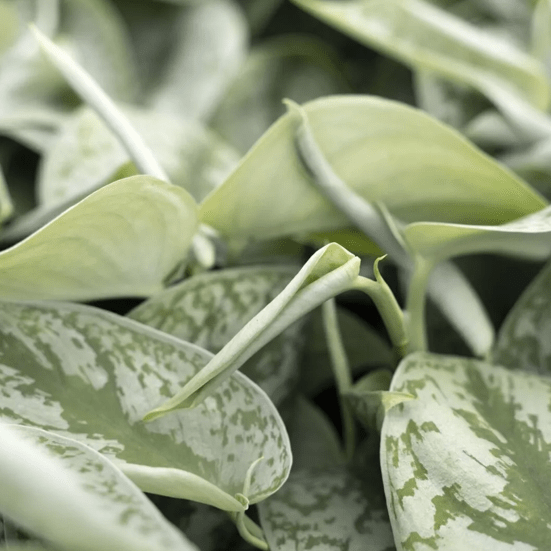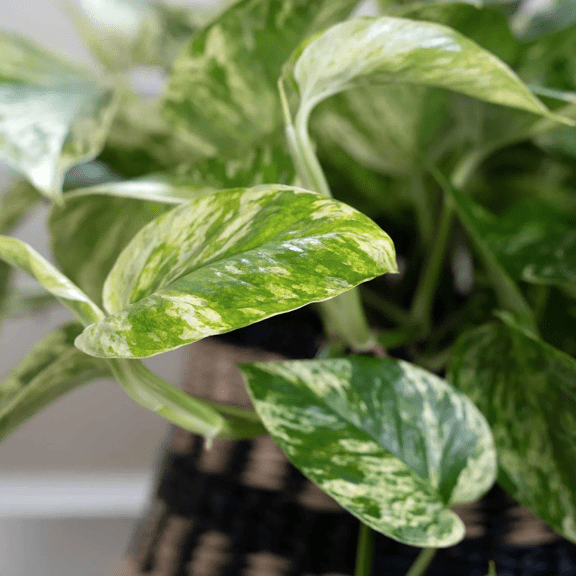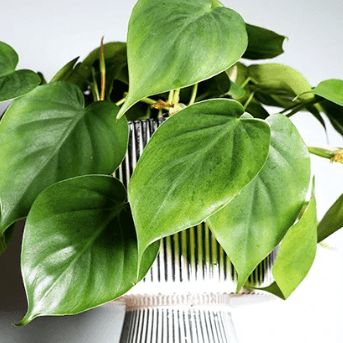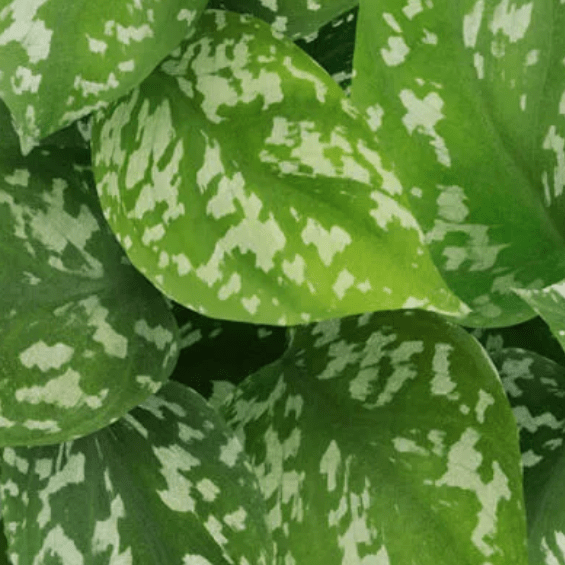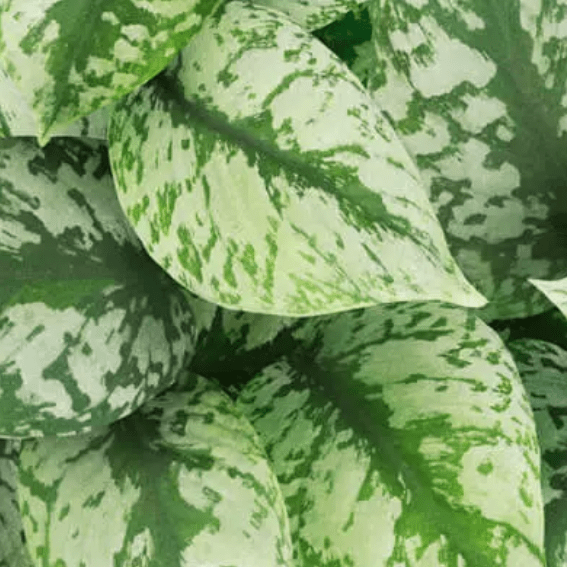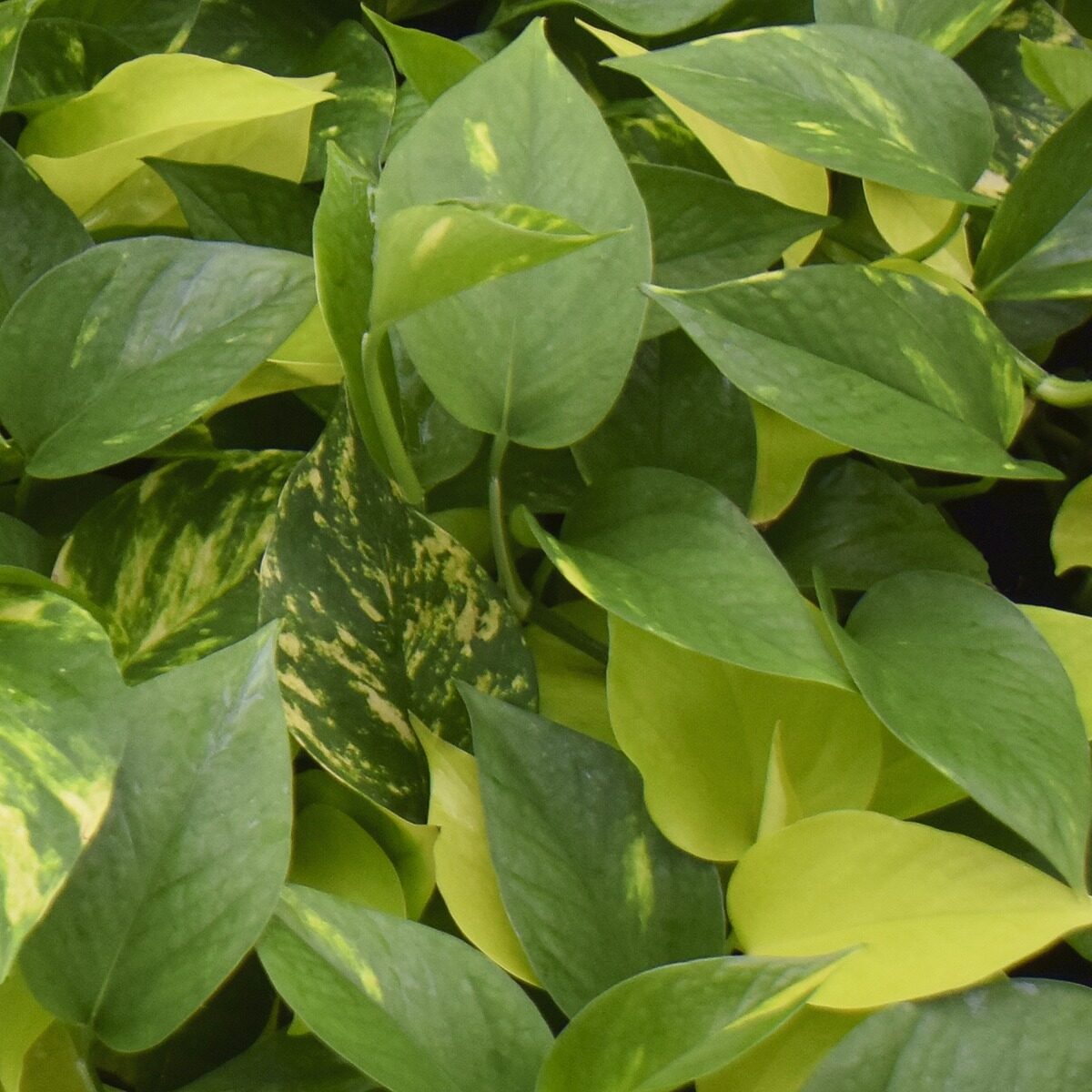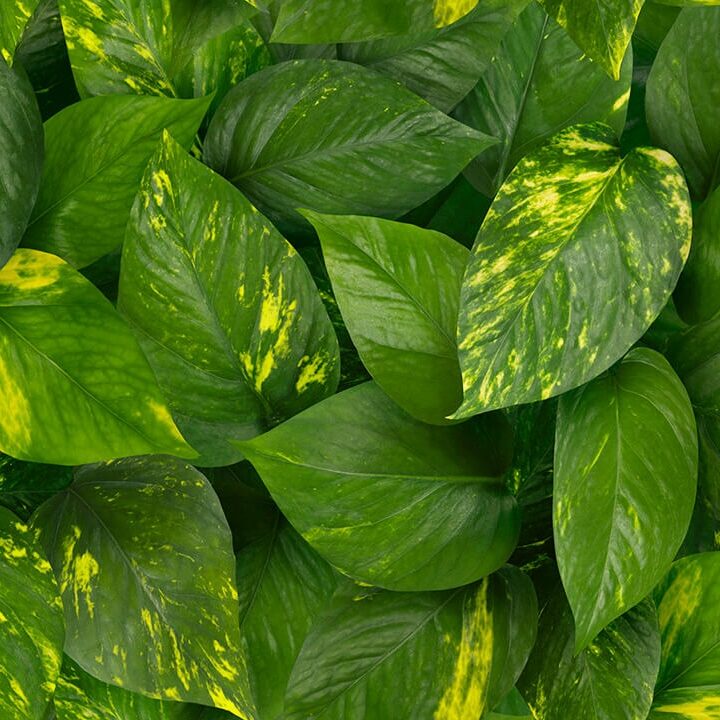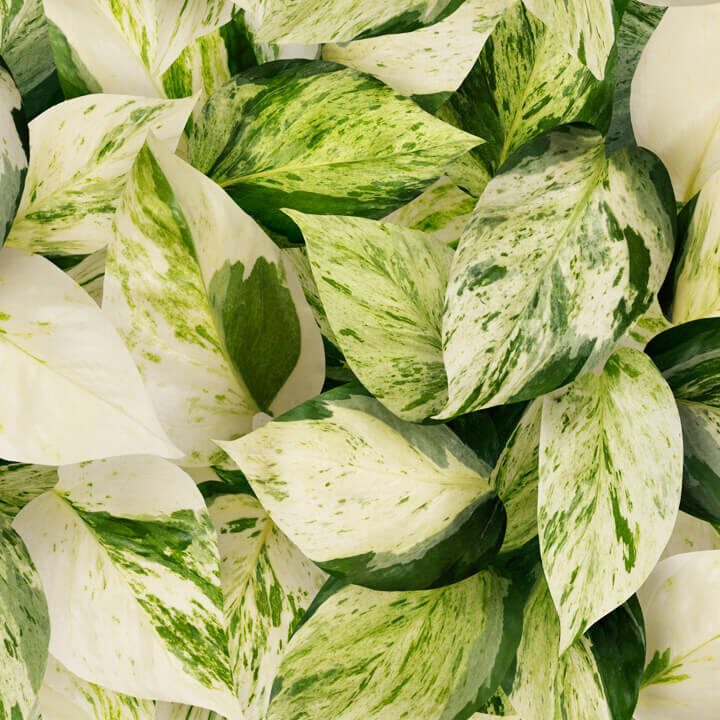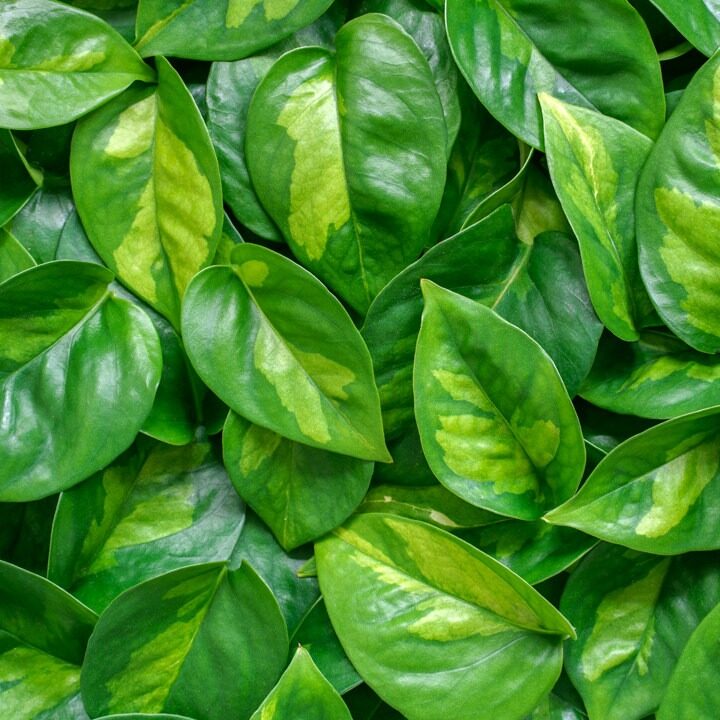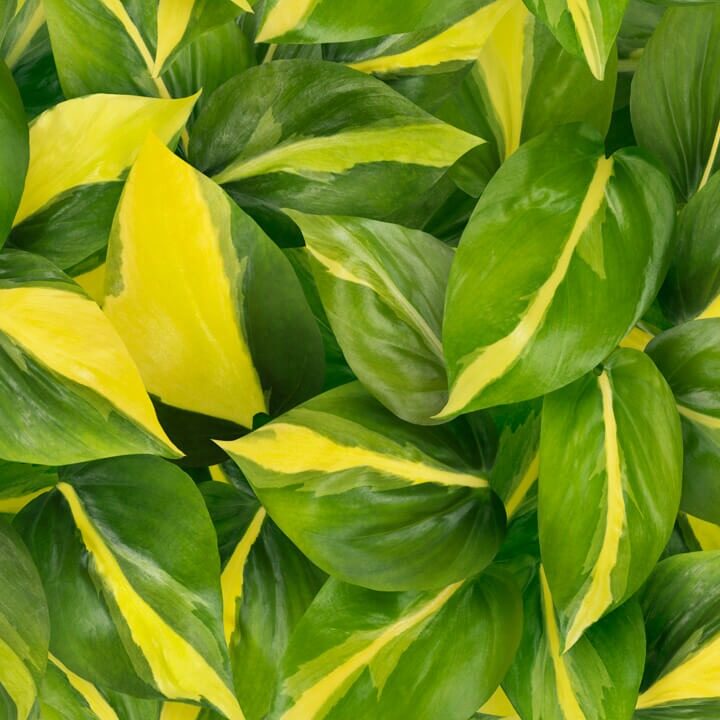The pictus is a work of art! It’s as though one of the great painters took a paint brush and adorned each olive-green, heart-shaped leaf with a different design. This gives the pictus its creative, artistic charisma that naturally cheers you up whenever you walk into the room. Fortunately, this kind of Scindapsus does not have to be displayed in just one gallery. The Scindapsus pictus is one of the most popular plants, and it will look beautiful in any interior. And in the office or living room, in particular.
Scindapsus pictus, also known as the ‘satin pothos’, the ‘silver pothos’ or the ‘silver vine’, is a non-flowering plant of the Araceae family. It originally comes from India, Bangladesh, Thailand, the Malay peninsula, Borneo, Java, Sumatra, Sulawesi and the Philippines.
Flower lovers often ask whether the pictus produces flowers. The answer is ‘no’. The pictus does not produce flowers, but it doesn’t need to. This plant makes itself noticeable with its beautiful leaves.
The pictus is available both as a hanging plant as well as a standing plant with a moss-covered stalk. Once you've acquired this plant, it’s best to pot it right away. This ensures more nutrients, a water buffer, airy soil and sufficient space for the roots to grow. The pictus likes to be placed in the partial shade, and prefers a somewhat humid environment. This has to do with the tropical rain forest climate in which the pictus originated. For this reason, never place your pictus plant on a window sill above the radiator and behind the window pane. Keep a close eye on air humidity during the winter. If the heat is turned on, the air will quickly become too dry. This will cause the leaves to develop brown edges and spots. To make the air more humid, place bowls with water in them atop the radiator.
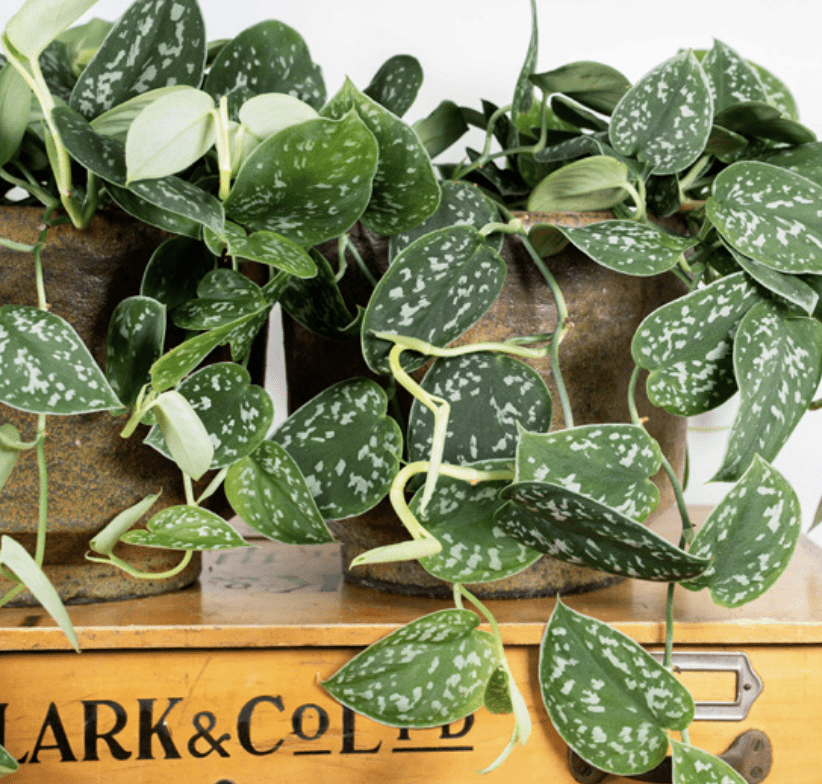
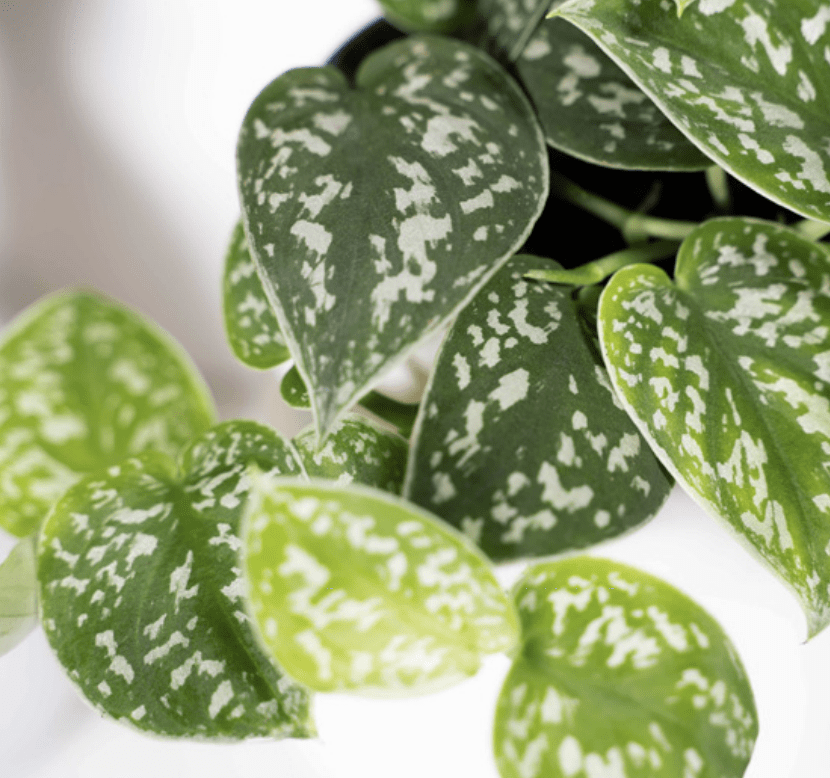
This plant likes a large pot, especially one with a diameter of about 15 to 20 cm. This ensures a balanced pot-to-plant ratio. In addition, a higher soil layer traps more moisture, since the soil should be slightly damp. Make sure that the lowest layer of the potting soil is dry before you give the plant more water. The pictus, for its part, is not a fan of cold feet or roots. The Scindapsus pictus is a beautiful, convenient plant with air-purifying effects. If you examine the plant closely, you’ll notice that it seems to have glistening, silver spots on the leaves. During the summer, this plant thrives enormously, and grows quickly. Sometimes, this is not all that convenient, but this plant is easy to trim and groom. Such a shame to have to throw away those beautiful, healthy leaves! You can easily cut the leaves!
The pictus is a work of art! It’s as though one of the great painters took a paint brush and adorned each olive-green, heart-shaped leaf with a different design. This gives the pictus its creative, artistic charisma that naturally cheers you up whenever you walk into the room. Fortunately, this kind of Scindapsus does not have to be displayed in just one gallery. The Scindapsus pictus is one of the most popular plants, and it will look beautiful in any interior. And in the office or living room, in particular.
Scindapsus pictus, also known as the ‘satin pothos’, the ‘silver pothos’ or the ‘silver vine’, is a non-flowering plant of the Araceae family. It originally comes from India, Bangladesh, Thailand, the Malay peninsula, Borneo, Java, Sumatra, Sulawesi and the Philippines.
Flower lovers often ask whether the pictus produces flowers. The answer is ‘no’. The pictus does not produce flowers, but it doesn’t need to. This plant makes itself noticeable with its beautiful leaves.
